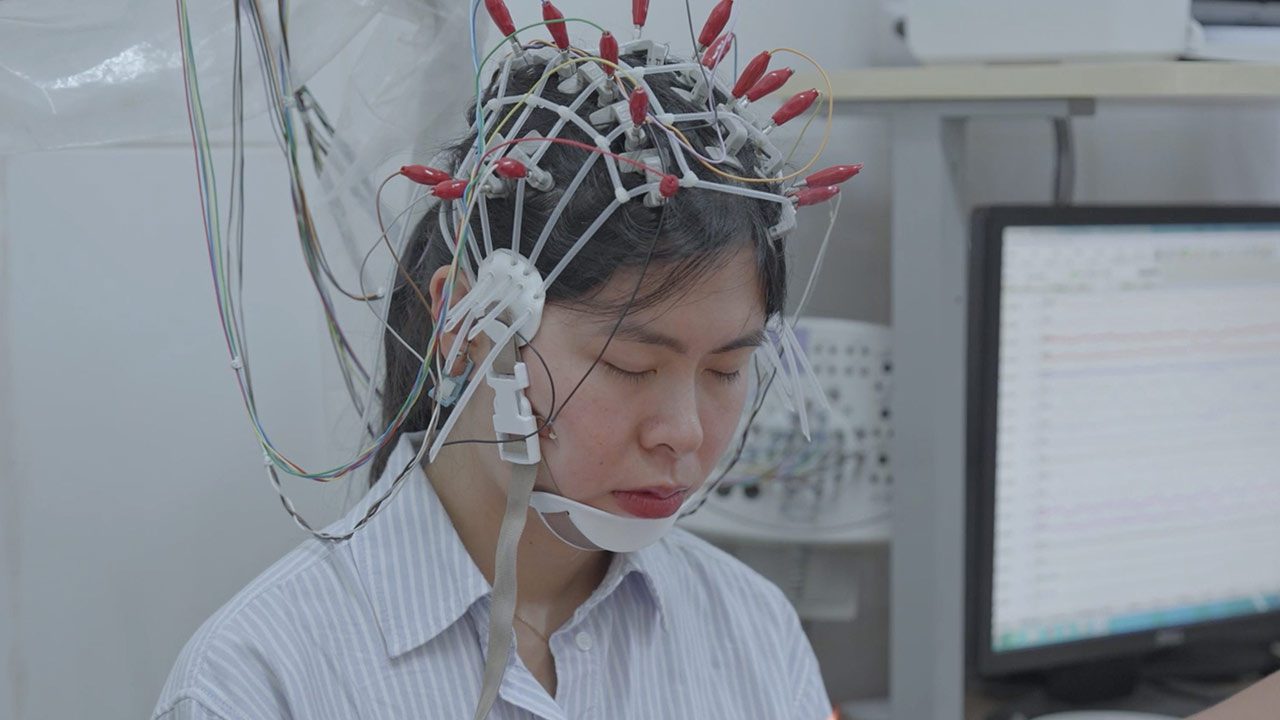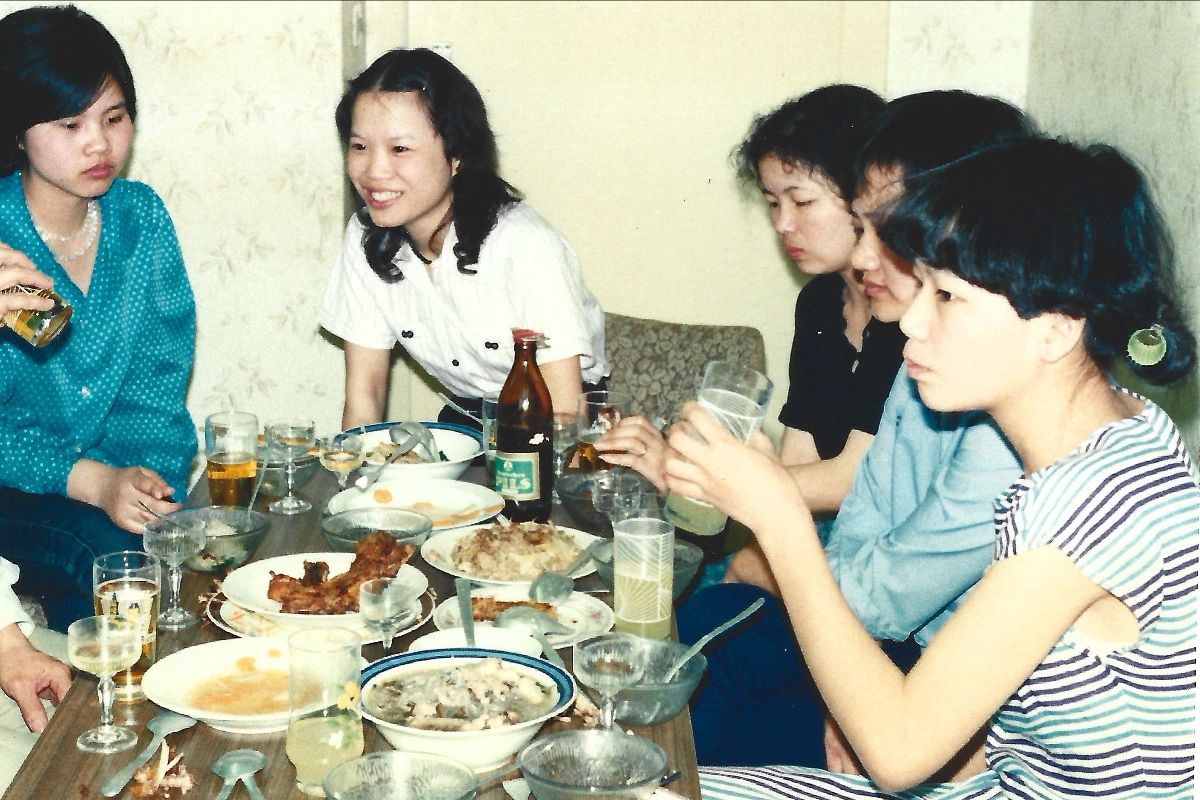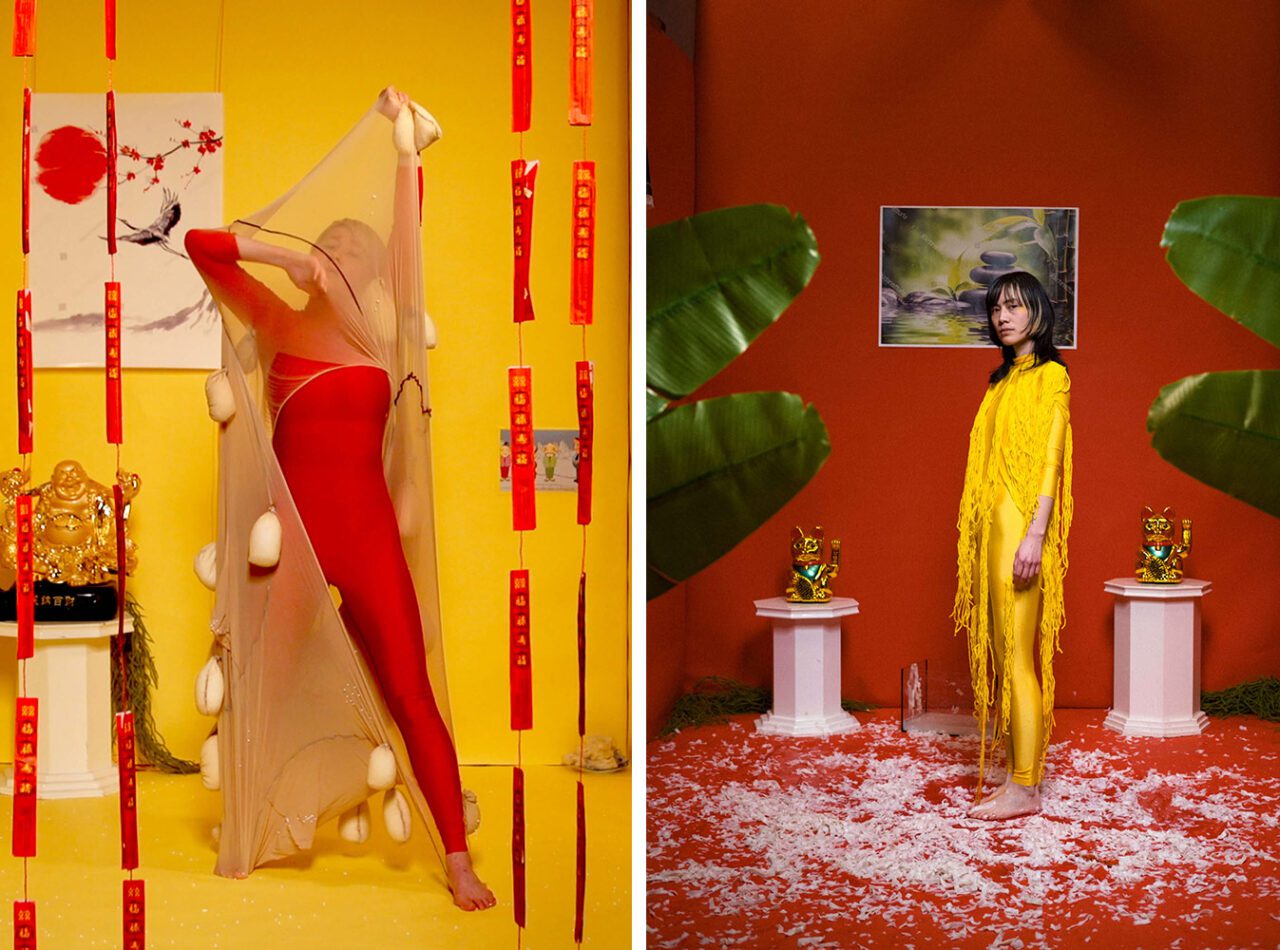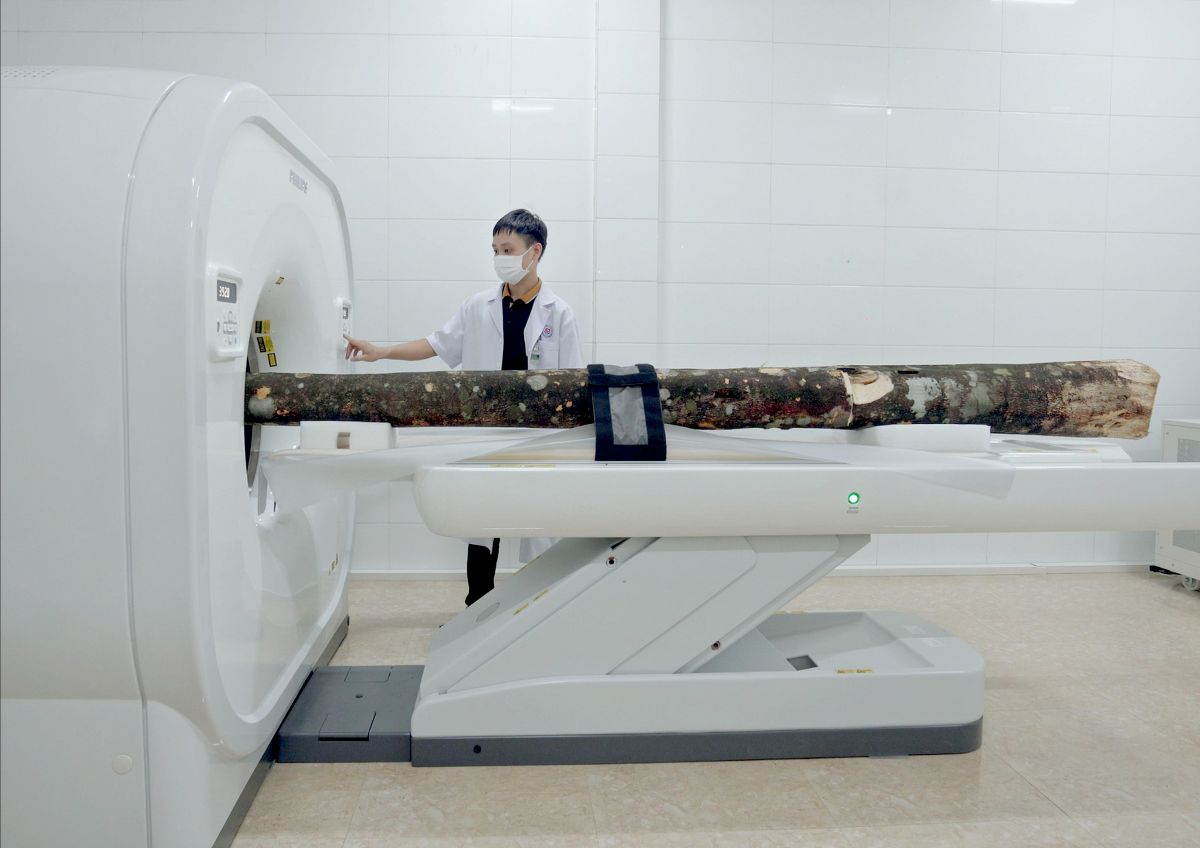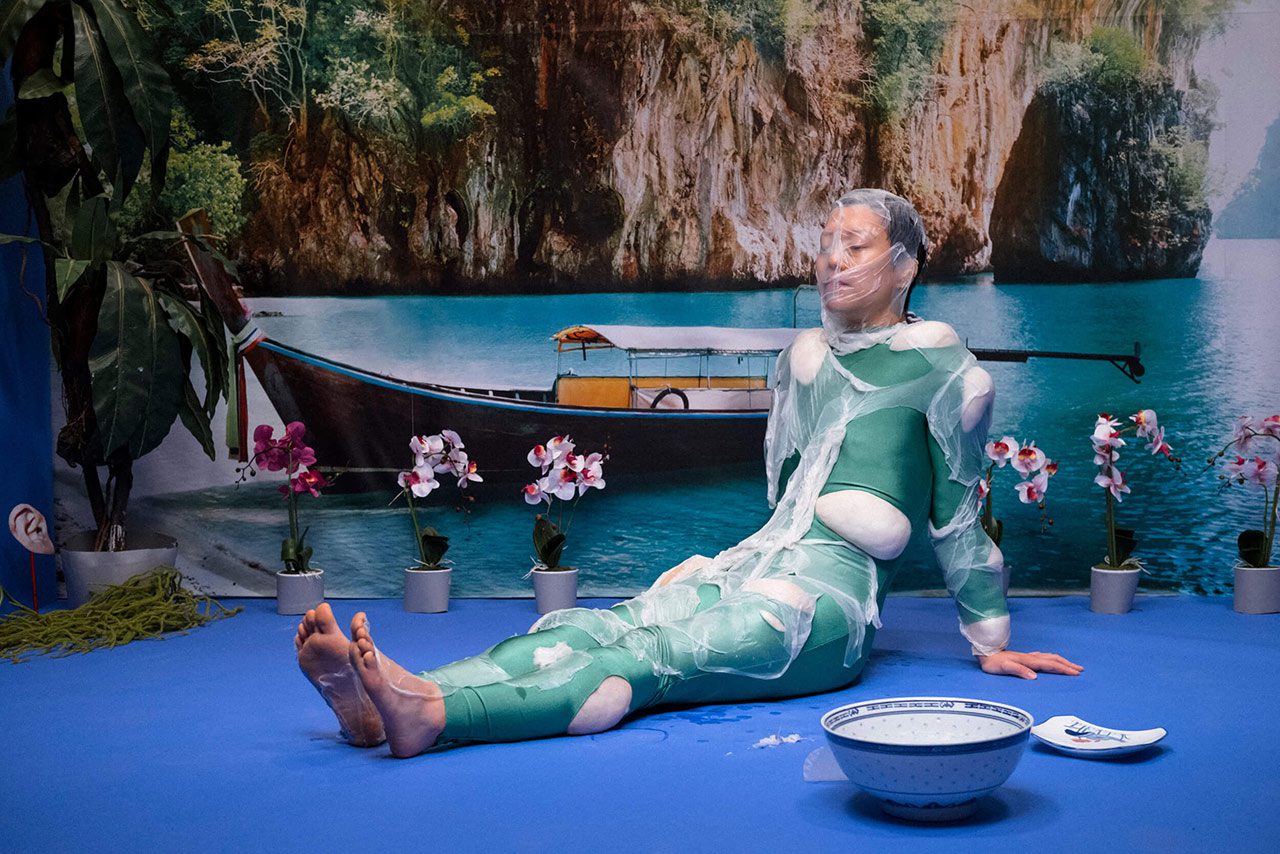Photo: Hiền Hoàng-Garden of Entanglement
Hiền Hoàng is a Vietnamese-born, Hamburg-based multimedia artist whose work bridges the intersections of human memory, nature, and technology. Through a practice that spans scientific data, installation, video, virtual/augmented reality, and performance, she creates multisensory experiences that uncover unseen narratives and explore ecological and emotional connections. Her projects often engage with themes of transformation, resilience, and the paradoxical relationship between humanity and the natural world.
By Dimitris Lempesis
In 2024, Hiền Hoàng was awarded the 18th Foam Paul Huf Award. Now, she presents her solo exhibition “Garden of Entanglement”, which encourages a multi-sensory reflection on the connection between humans and nature. Her practice is deeply shaped by interdisciplinary collaborations with scientists and technologists which reveal the ambivalent role of technology as both a means to understand nature and a force that distances us from it. Hoàng’s multidisciplinary practice seamlessly weaves together photography, sculpture, video, installation, and performance. Central to her work is the theme of migration—explored not only through the personal lens of her family’s history, but also through the lasting traces of colonialism embedded in nature. In the exhibition “Garden of Entanglement”, Hoàng explores these narratives through three of her recent projects: “Garden of Entanglement”, “Scent from Heaven”, and “Across the Ocean”.
“Garden of Entanglement” explores the hidden vibrational life of trees, investigating how they perceive and respond to their environment through motion and sound. The project reflects on the intricate relationship between nature, humanity, and technology, transforming scientific data into a multi-sensory artistic experience that bridges the physical and emotional connections between humans and the natural world. At the heart of the project lies a poetic question: “What would trees remember about us once we are gone?” This inquiry led to interdisciplinary collaborations with scientists and technologists to uncover the subtle dynamics of tree behavior. The research began with dynamic measurements of tree responses conducted in collaboration with the Dr. Andrea Giachetti – Department of Civil and Environmental Engineering, University of Florence, where accelerometers were used to capture how trees respond to external stimuli over time, including sound frequencies and human touch. The collected data was then processed with the Media Solution Center, University Stuttgart, where it was subtracted, extracted, and analyzed to uncover meaningful patterns of vibration. These data forms became the foundation for artistic experimentation, where tree responses were translated into a system of motion and sound. This motion system enables audiences to experience how a tree’s internal vibrations evolve over time and after each stimulus, transforming scientific measurements into a tangible and embodied experience. The project also incorporates an interactive AR game, which allows audiences to step inside the inner world of a tree. By navigating through an abstract digital representation of the tree’s interior, participants can feel its vibrations and listen to its responses, immersing themselves in the otherwise imperceptible dynamics of the natural world. This interactive layer deepens the connection between the physical and digital realms, offering a unique way to explore the vibrational life of trees.
“Scent from Heaven” examines the paradoxical relationship between suffering and transformation through the story of the Agarwood tree, a fragrant and highly valued wood native to Southeast Asia. Agarwood, revered for its heavenly scent and symbolic associations with healing and redemption, is formed only after the tree endures prolonged pain caused by infection or external wounds. This project explores the contradiction between the suffering of nature and humanity’s longing for healing and salvation, reflecting on how beauty and value often arise from destruction and trauma. The project draws on the spiritual and cultural significance of Agarwood, which is mentioned in the New Testament as one of the materials used to anoint Jesus’ body after the Crucifixion*. In this context, Agarwood becomes a symbol of both suffering and sanctity, embodying the paradoxical coexistence of pain and redemption. This duality mirrors the way humans exploit nature’s suffering to fulfill their spiritual, emotional, and material desires. Through scientific methodologies and immersive storytelling, Scent from Heaven transforms this narrative into a sensory experience. Using CT scans, I visualized the internal scars and transformations within the Agarwood tree, revealing the hidden wounds that give riseto its valued fragrance. At the same time, EEG technology captured human brain activity as audiences experienced the scent of Agarwood, highlighting the intimate but often exploitative connection between humans and the natural world. The project’s central element is a VR installation, which invites audiences to enter the inner world of the Agarwood tree. Through abstract, sensory environments blending data visualization, soundscapes, and poetic imagery, the work creates a multisensory journey. This immersive experience allows viewers to reflect on the coexistence of pain and beauty, drawing parallels between ecological suffering and universal human experiences of trauma, healing, and redemption.
“Across the Ocean” is an interdisciplinary project that examines how food serves as a bridge between culture and personal memory while also being a vehicle for stereotypes and clichés. Using familiar ingredients like rice, soy sauce, and other traditional foods, I explore how Western cultures perpetuate reductive notions of “Asianness,” reducing complex identities to simplistic tropes. Food, deeply tied to heritage and everyday life, becomes the medium through which I question how cultural perceptions are formed, sustained, and distorted. This project was inspired by my late aunt, who was a contract worker in the former GDR in 1986. As the eldest daughter in my mother’s family, she wrote letters home that painted an idealized picture of her life in Germany, omitting the challenges of surveillance, discrimination, and hardship she faced. In 2014, during a visit to her home and through subsequent research into family archives, I uncovered the contrast between the hopeful image she projected and the reality she endured. This personal discovery led me to use food and its symbolic power to investigate immigrant identity and the layers of meaning hidden beneath polished narratives. Food, in this context, represents more than nourishment—it carries stories, memories, and collective identities. I incorporate food imagery and acrylic glass, a material symbolizing consumerism and industrialization, to evoke both cultural pride and commodification. Through a process of distortion and destruction, I transform these materials, breaking the surface of stereotypes to reveal underlying personal and collective traumas. This process is a metaphor for deconstructing the idealized image of the “good immigrant” and challenging the stereotypes imposed on Asian communities.
Image © & Courtesy Hiền Hoàng
Info: Foam, Keizersgracht 609, Amsterdam, The Netherlands, Duration: 6/6-10/9/2025, Days & Hours: Min-Wed & Sat-Sun 10:00-18:00, Thu-Fri 10:00-21:00, www.foam.org/
